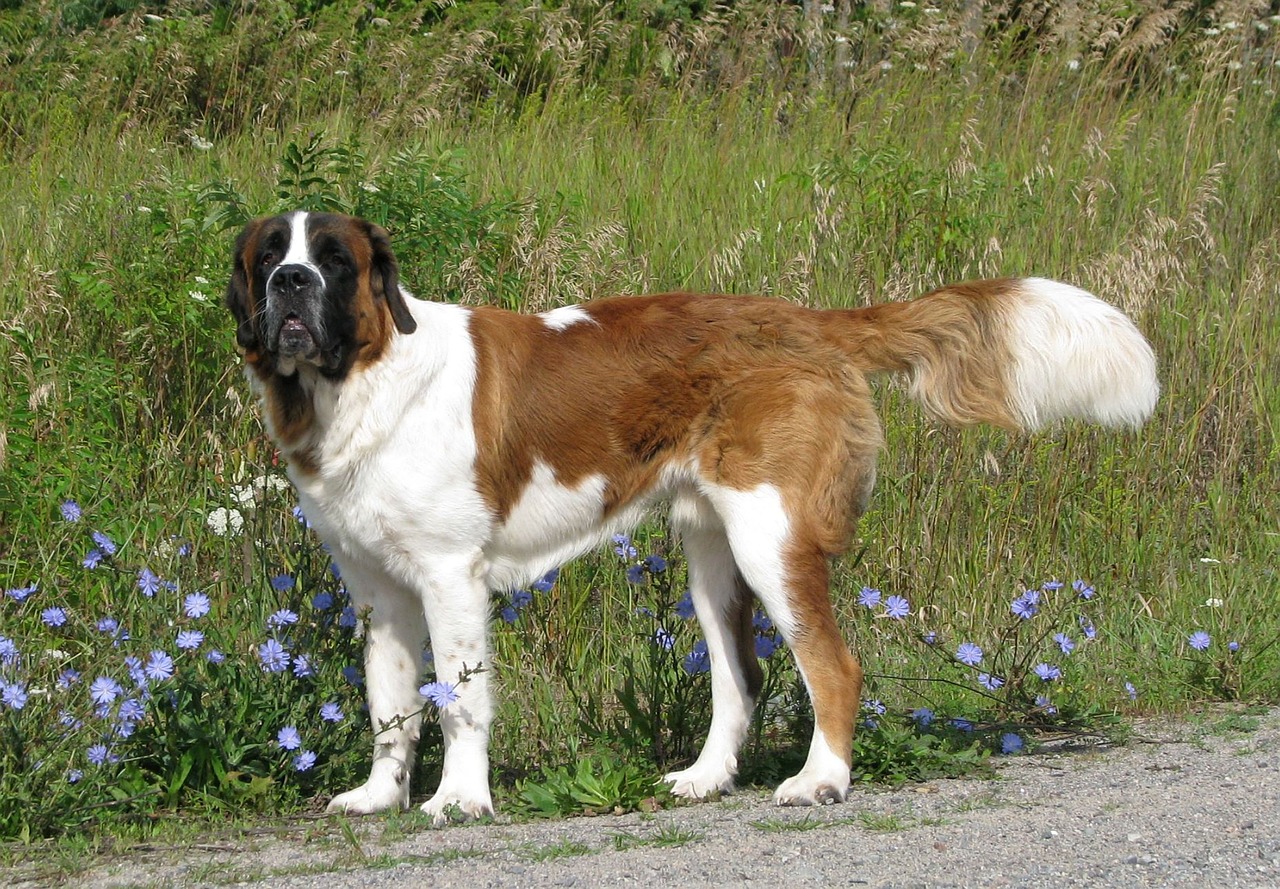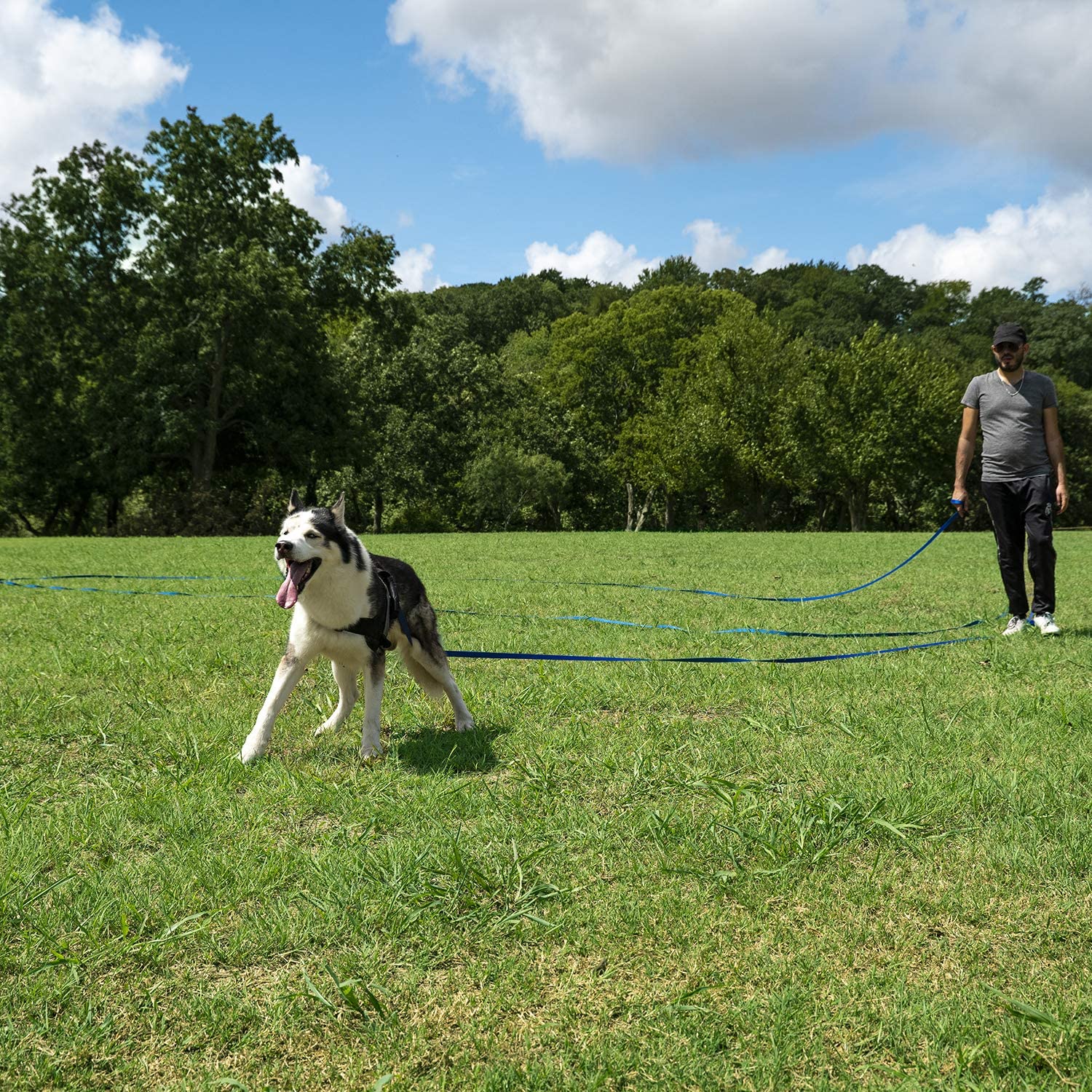
St. Bernards are one of the most lovable and loyal dog breeds, but they can also be strong-willed and independent. This can make training them to come when called a bit challenging, especially if they become distracted or find something more interesting to do. However, teaching your St. Bernard to come when called is crucial for their safety and your peace of mind.
In this article, we’ll explore some effective tips and techniques for training your St. Bernard to come when called, so you can enjoy a stronger and more trusting bond with your furry friend.
Note: For a complete training, we highly recommend this SpiritDog Online Training Course “Coming When Called”.
1. Start with a Strong Foundation
Before you begin training your st. bernard to come when called, it’s crucial to establish a strong bond with your pet. Spend time playing with your dog, engaging in activities they enjoy, and providing positive reinforcement through praise and treats. Building trust and a strong connection with your st. bernard will make them more likely to respond positively to your commands.
2. Choose a Distinct Command Word
Select a specific word or phrase for the recall command, such as “come” or “here.” Ensure that the command is distinct from other commands you use and that all family members use the same word consistently. Consistency is critical to avoid confusing your st. bernard and ensuring that they understand what you expect from them.
3. Begin Training Your St. Bernard in a Controlled Environment
Start training your st. bernard to come when called in a controlled, distraction-free environment like your home or a fenced yard. In the early stages of training, it’s essential to minimize distractions to help your dog focus on learning the new command. As your dog becomes more reliable in responding to the recall command, gradually introduce distractions and practice in various environments.
4. Use Positive Reinforcement with Your St. Bernard
When training your st. bernard to come when called, always use positive reinforcement techniques. Reward your pup with praise, treats, or playtime when they respond to your recall command. This will help create a positive association with the command and motivate your dog to respond consistently. Remember to be patient and consistent in your training, as it may take time for your dog to master the recall command.
If you’re using treats, these are currently the most popular training treats on Amazon.
5. Gradually Increase Distance and Distractions
As your st. bernard becomes more reliable in responding to the recall command in a controlled environment, begin to increase the distance between you and your dog during training sessions. Practice calling your dog from various distances and gradually introduce distractions, such as other dogs, people, or toys. This will help your dog learn to respond to the command even in challenging situations.
Related: Looking for the fastest way to train your st. bernard to come when called? Try this video course.
6. Make Yourself Interesting and Rewarding to Your St. Bernard
To encourage your st. bernard to come when called, make yourself more appealing and rewarding to your dog. Use an enthusiastic, high-pitched voice when calling your dog, and reward them with a treat or praise when they respond. You can also try running away from your dog when calling them, as this can entice your dog to chase after you and respond to the recall command.
7. Never Punish Your St. Bernard for Coming When Called
It’s essential to avoid punishing your st. bernard if they do not immediately respond to the recall command or if they come to you slowly. Punishing your dog can create a negative association with the command and make them less likely to respond in the future. Instead, be patient and continue to practice and reinforce the command using positive reinforcement techniques.
8. Practice the Recall Command Regularly with Your St. Bernard
Consistent practice is crucial for training your st. bernard to come when called. Incorporate recall training into your dog’s daily routine, and practice the command in various environments and situations. This will help reinforce the behavior and make it more reliable over time.
9. Use a Long Training Leash on Your St. Bernard
When transitioning from a controlled environment to a more open space, consider using a long training leash to maintain control over your st. bernard while they learn to respond to the recall command. This will help you avoid losing control of your dog and provide a safety measure as you gradually increase the distance and distractions during training sessions.
This is the most popular long training leash on Amazon.
10. Be Patient and Persistent with Your St. Bernard
Training your st. bernard to come when called takes time, patience, and persistence. Some dogs may learn the command quickly, while others may require more time and consistent practice. Be patient with your dog and maintain a positive attitude during training sessions. Remember that every dog is unique, and the key to success is consistent practice and positive reinforcement.
11. Use a Professional Online St. Bernard Training Course
While this article provides many helpful tips for training your st. bernard, you can increase your chances of success by enlisting the help of a professional online dog trainer. We love the SpiritDog online courses, since its includes unlimited questions with a real dog trainer.
You can check out their Teach Your St. Bernard to Come Online Course Here
In conclusion, training your St. Bernard to come when called is an essential aspect of responsible dog ownership. While it may require patience and consistency, it is a rewarding experience that can strengthen your bond with your furry friend. By using positive reinforcement techniques, such as treats and praise, and practicing in a variety of environments and distractions, you can teach your St. Bernard to come when called reliably. Remember, every dog is unique, so it’s important to tailor your training to your St. Bernard’s personality and learning style. With dedication and perseverance, you’ll have a loyal and obedient companion for years to come.
More Frequently Asked Questions For Training Your St. Bernard
Training your St. Bernard to come when called is an important aspect of dog ownership, but it can also be a challenging one. Here are three frequently asked questions that can help you with your St. Bernard training:
1. How can I teach my St. Bernard to come when called?
The best way to teach your St. Bernard to come when called is through positive reinforcement training. Begin by calling your dog’s name in a happy, upbeat tone, and reward them with a treat or praise when they come to you. Repeat this process frequently, gradually increasing the distance between you and your dog. As your St. Bernard becomes more reliable, you can begin to introduce distractions, such as toys or other dogs, and continue to reward them when they come to you. Remember to always use a positive, patient approach, and never punish your dog for not coming when called.
Consistency is key in teaching your St. Bernard to come when called. It’s important to practice this command regularly in a variety of settings, such as in the house, in the backyard, or on walks. By making the command a positive and rewarding experience, your St. Bernard will learn to associate coming when called with positive reinforcement and will be more likely to respond when needed.
2. How can I train my St. Bernard to stop jumping on people?
Jumping on people is a common behavior in St. Bernards, especially when they are excited or want attention. The best way to train your St. Bernard to stop jumping is through consistent training and redirecting their behavior. When your dog jumps on you or others, simply turn your back and ignore them until they stop. Once your St. Bernard stops jumping, immediately reward them with a treat or praise to reinforce the desired behavior. This will teach your dog that jumping on people is not acceptable behavior and will not result in the attention they seek.
Another effective technique is to redirect your St. Bernard’s energy into a positive activity, such as playing with a toy or going for a walk. This will help your dog learn to focus their energy in a more productive way and reduce the likelihood of jumping on people.
3. How can I teach my St. Bernard to walk on a leash?
Teaching your St. Bernard to walk on a leash can be challenging, as they are a large and strong breed. The first step is to choose the right leash and collar for your St. Bernard. A sturdy, well-fitted collar or harness and a strong, non-retractable leash will give you better control over your dog and make walking more comfortable for both of you.
Begin by getting your St. Bernard used to wearing their collar or harness and walking on a leash in a quiet, familiar environment, such as your backyard. Gradually introduce new environments and distractions, such as other dogs or people, and reward your St. Bernard with treats and praise for walking calmly and staying by your side.
If your St. Bernard pulls on the leash, stop walking and wait for them to calm down before continuing. Use a firm, but gentle, correction when needed, such as a quick tug on the leash or a verbal command like “heel.” Consistency and patience are key in leash training, so be sure to practice regularly and keep a positive attitude.
Remember, training your St. Bernard takes time, patience, and consistency, but it is well worth the effort. With positive reinforcement and a gentle approach, you can build a strong bond with your furry friend.
4. What’s the best online course for teaching a st. bernard to come when called? At iHeartDogs, we recommend the SpiritDog online course “Coming When Called.” The course includes unlimited questions with a real dog trainer.
iHeartDogs is reader supported. Our articles contain affiliate links where we are paid a small commission for linking to a product at no additional cost to the reader.



 Toledo, United States.
Toledo, United States.
